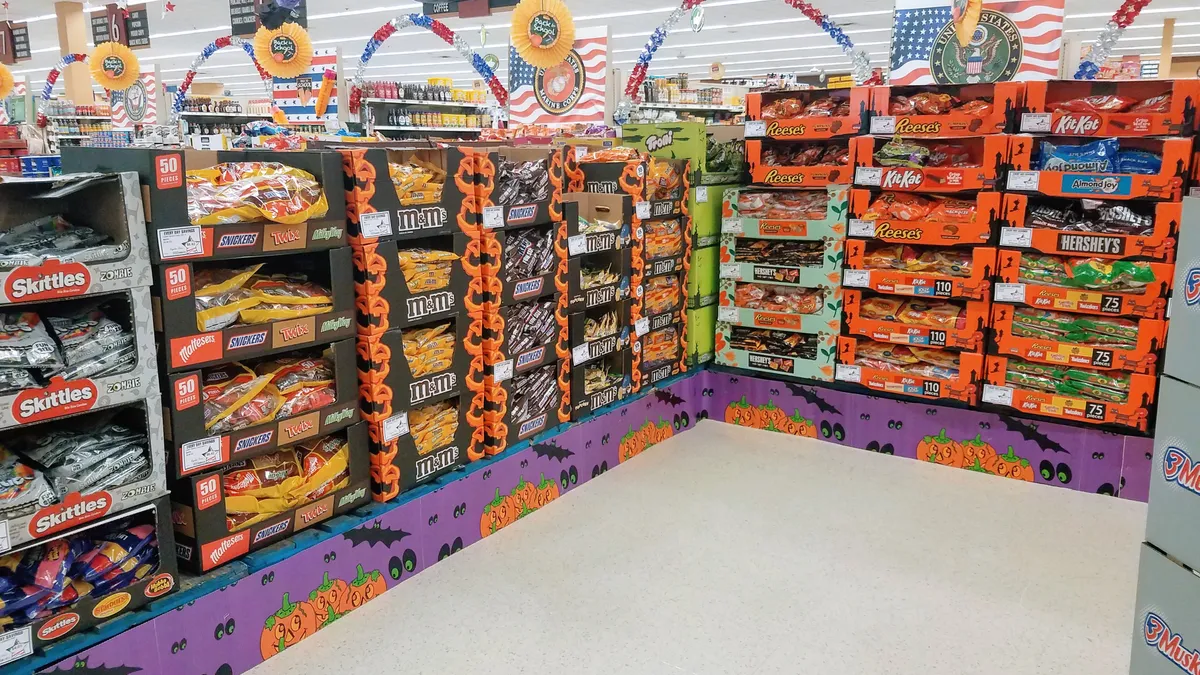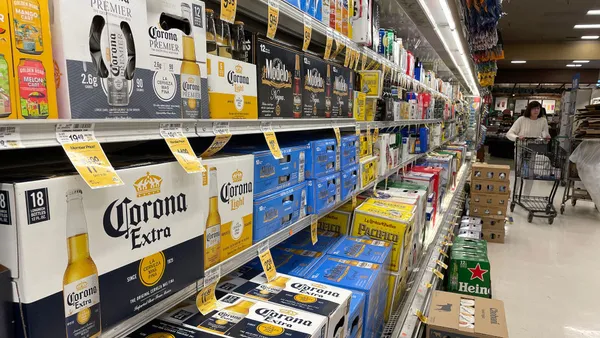Dive Brief:
- Chocolate sales grew 4.2% while non-chocolate candy sales grew by 2.9% during 2020, according to the 2021 State of Treating report from the National Confectioners Association (NCA).
- During the pandemic, 61% of consumers changed their confectionery purchasing patterns. Around 41% purchased more value packs and individually wrapped items, while the number of households purchasing sweets online at least twice climbed 76%. Total online dollars spent jumped 14.3% per person. Gum and mint sales dropped 22.7% to account for 12% of total confectionery sales.
- Overall, U.S. confectionery sales fell 0.2% compared to 2019, however, totaling $36.7 billion. NCA expects confectionery sales to tally $39.5 billion by 2025.
Dive Insight:
Although confectionery sales saw a slight dip in 2020, the chocolate and non-chocolate categories saw a boost. Chocolate has proven to be a compelling comfort food for many people during the pandemic and has largely been a pandemic-proof category as a result. A decline in gum and mint sales is largely to blame for the segment’s 0.2% slip over 2019 figures, with most consumers sheltering in place, working from home and wearing masks in public.
Consumers' increased candy purchasing patterns could have something to do with their decision to indulge more during the beginning of the pandemic. The trend toward soothing with chocolate is a marked shift from consumers' recent tendency to be more sugar conscious. Data from Innova Market Insights in November 2019 found that three out of five U.S. consumers were working to cut their sugar intake. They were even eschewing alternative products containing artificial sweeteners in a bid to control their sweet tooth.
Hershey’s is trying to find the sweet spot between pandemic-driven indulgences and health consciousness with its new lineup of low- or no-sugar options. It’s also offering organic and bite-sized treats to cater to different consumer segments who make purchasing decisions based on more than just flavor and price. Currently, only 6% of confectionery sales fall into the better-for-you category, according to Hershey’s. The company is hoping to see that figure climb closer to 20%, on par with other snacking categories.
One of the biggest shifts for candy sales in 2020 was consumers' adoption of online purchases, with online confectionery sales skyrocketing, according to NCA. The primary motivator for online purchases was convenience followed by an inability to find items in-store, free shipping and better deals.
The shift toward individually wrapped items tracks with many consumers new concerns over cutting down on contamination.
Seasonal holidays typically lead candy sales in the U.S., but due to shelter-in-place orders some of these events saw sluggish sales, according to the NCA report. Valentine’s Day-related purchases pulled in normal dollars last year, but Halloween, Easter and the December holidays saw drop offs. Candymaker Ferrara tailored its Valentine’s Day marketing this year to the pandemic by encouraging shoppers to engage in a socially distanced holiday, embracing the new normal of smaller gatherings and staying at home.
Despite the decline, many consumers used holidays to break up the monotony of quarantine. Three-quarters of millennial moms surveyed in the NCA report described celebrating Halloween as more important than ever, for example. IRI reported an 8.6% boost in candy sales around the holiday while 96% of parents reported planning to celebrate Halloween in some fashion.













